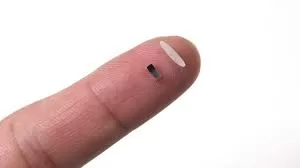CHICAGO, IL – In a significant medical breakthrough, engineers at Northwestern University have developed the world’s smallest pacemaker, designed to be injected directly into the body, offering a less invasive treatment option for newborns with congenital heart defects. This revolutionary device, smaller than a grain of rice, promises to minimize trauma and simplify procedures for vulnerable pediatric patients.
The innovative pacemaker operates wirelessly, eliminating the need for traditional wires and surgical removal. A wearable, external device controls the pacemaker using light pulses. When the wearable device detects an irregular heartbeat, it emits infrared light that penetrates the patient’s skin, activating the pacemaker and stimulating the heart to maintain a normal rhythm.
“This technology represents a paradigm shift in how we approach cardiac pacing for newborns,” said a lead researcher from Northwestern’s engineering team. “The ability to inject a tiny, dissolvable pacemaker non-invasively, and control it wirelessly, significantly reduces the risks associated with traditional surgeries.”
One of the most remarkable features of this new pacemaker is its dissolvable nature. Designed for temporary use, the device naturally breaks down within the body once it is no longer needed, eliminating the necessity for subsequent surgical procedures to remove it. This feature is particularly advantageous for newborns, who often require temporary pacing and are at higher risk from invasive surgeries.
The small size of the pacemaker also simplifies implantation. Using a standard syringe, doctors can inject the device directly into the heart tissue, minimizing trauma and reducing recovery time. This less invasive approach is expected to improve patient outcomes and reduce the burden on healthcare systems.
The groundbreaking research, detailed in a study published in the prestigious journal Nature on April 2nd, highlights the potential of this technology to transform pediatric cardiology. The development of this injectable, dissolvable pacemaker offers a promising solution for the treatment of congenital heart defects in newborns, providing a safer and more efficient alternative to traditional pacing methods.
The researchers are optimistic that this technology will soon be available for clinical use, offering hope to countless families facing the challenges of congenital heart defects.
Disclaimer: This article is based on information provided in the source material and is intended for informational purposes only. It should not be considered medical advice. Always consult with a qualified healthcare professional for any health concerns or before making any decisions related to your health or treatment. The technology described is still under development and may not be available for widespread clinical use.












